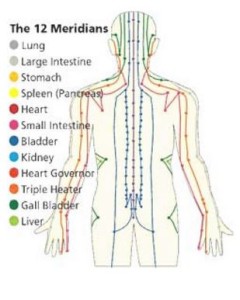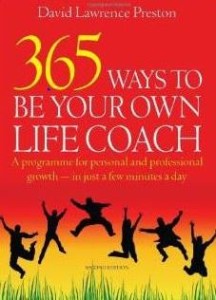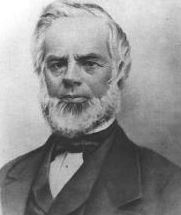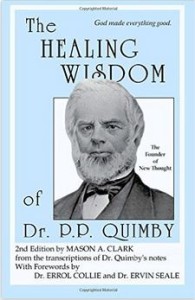Anyone who has ever felt sick with worry or cried at the cinema knows that there is a close connection between our thoughts, emotions and bodily state, but only in the last couple of decades has the medical establishment acknowledged this connection and begun to take it seriously. The reason was that scientists could find no discernible means by which the brain, nervous system and immune system communicated with each other, and hence could not explain how the mind could possibly bring about physical changes.
Dr Candace Pert changed all that. She discovered the biochemical mechanisms through which mind-body communication takes place. As a result of her work, and that work of other great PNI (Psycho-Neuro-Immunology) pioneers such as Cannon, Ader, Felten and the rest, no serious medic today would deny that our thoughts and emotions affect our health. No longer can we regard the body and mind as distinct from each other – they function together as a single unit, an interconnected whole.
The Molecules of Emotion is an account of Dr Pert’s life and work from her graduation in 1970 until its publication in 1997. The first chapter sets the scene, a scientific explanation of ligands, peptides and receptor sites cleverly woven into her account of how she approaches lecturing to an expert audience. The next few chapters describe the defining period on her life when, as a young scientist trying to make her mark, she fought off those who said it couldn’t be done and discovered the opiate receptor in the brain. She then found herself at odds with those in power who resented her challenge to established scientific thinking and who weren’t ready to be confronted by – shock horror!!! – a woman shaking things up. Indeed, this episode sets the tone for much of the book. She frequently returns to the 1970’s style feminism, concluding that her difficulties in getting the credit to which she was entitled were due to her gender rather than the dirty tricks and ruthlessness of professional colleagues.
Personally, as one who gave up chemistry and biology at an early age, I found the book tough going in places, but the ‘difficult’ passages soon give way to more reader friendly narrative. Parts are stomach churning; her description of making a frothy milkshake-like mixture from the brains of the recently deceased is not for the faint-hearted, but an essential part of her research. She describes research that would later signpost an effective treatment for HIV, an easily synthesised polypeptide that would block one of the receptor sites by which the virus gains access to the body. Complicated, yes, but even so, the author makes it as clear as possible for the uninitiated like me. I learned a great deal, and, thanks to a clear and comprehensive index at the back, will use the book as a source of reference in the future.
Besides, for me, the science is not the only point of the book, for behind the technical details lies a fascinating human interest story of a determined young woman doing unconventional research in a staid and conservative environment. Indeed, her first major breakthrough would not have happened if she’d obeyed her superior’s instruction to discontinue that line of research. Then as the story unfolds, we learn how she was denied her share in a prestigious award, even though she did most of the research; her difficulties combining he professional life with her family life; her 10 year struggle to get funding for research; and how she founding of a research institute with a state-of-the-art laboratory only to have the funding withdrawn after falling foul of the intriguingly unnamed ‘Second Biggest Drug Company on the Planet’. She tells how she sabotaged her chances of gaining a Nobel Prize nomination by refusing to support the nomination of a group of (male) rivals who she felt had stolen her ideas.
Later breakthroughs in HIV/AIDS and cancer treatments followed, each as hard-fought as the last. By then, she had become more resilient, and her anger and frustration had given way to mindfulness and acceptance. For out of her research had come the realisation that forgiveness and a positive attitude in the face of adversity are important for maintaining wellbeing, and that toxic emotions must be expressed and worked through.
 The final chapters offer an eight part programme for a healthy lifestyle. By then, she had discovered meditation, consciousness and chakra-based energy medicine. She had become an apostle for integrating mainstream, science-based medicine with holistic healthcare, and acknowledged the interaction between ‘healer’ and ‘client’ as an important part of the healing process. She had also stumbled across the notion of information exchange as the basis of understanding biological life, referring to neuropeptides and receptors as ‘information molecules’.
The final chapters offer an eight part programme for a healthy lifestyle. By then, she had discovered meditation, consciousness and chakra-based energy medicine. She had become an apostle for integrating mainstream, science-based medicine with holistic healthcare, and acknowledged the interaction between ‘healer’ and ‘client’ as an important part of the healing process. She had also stumbled across the notion of information exchange as the basis of understanding biological life, referring to neuropeptides and receptors as ‘information molecules’.
The Molecules of Emotion has been criticised by the more scientifically minded as focussing too much on the human interest story and veering too far towards the ‘woo-woo’ in its final chapters, and by science-phobics as too heavy on technical detail. But science is an unfolding process. Scientifically, the world has moved on since The Molecules of Emotion was first published. We know a great deal more about the mechanisms by which our mental and emotional processes affect the biochemical make up of the body and manifest as health and wellbeing or dysfunction and disease. As a result, health practitioners (including doctors) are no longer reluctant to discuss with clients how their beliefs and lifestyle choices impact on their health, and more and more clients readily embrace holistic healing approaches alongside conventional medicine.
Dr Pert made some important discoveries, then, not content to keep them to herself, fought hard to bring them to our attention. Her work validates what common sense has always told us – that the mind and body are intimately connected. For me, this book is an essential read for anyone engaged in medicine/healthcare and/or healing, either as a practitioner, educator, policymaker or administrator.
Dr Candace Pert, The Molecules of Emotion: Why You Feel The Way You Feel, Pocket Books, 1999, ISBN- 13: 978-0-6710-3397-2
Copyright David Lawrence Preston, 25.3.18. All rights reserved.
Follow me on Facebook and Twitter, @feelinggoodatt







